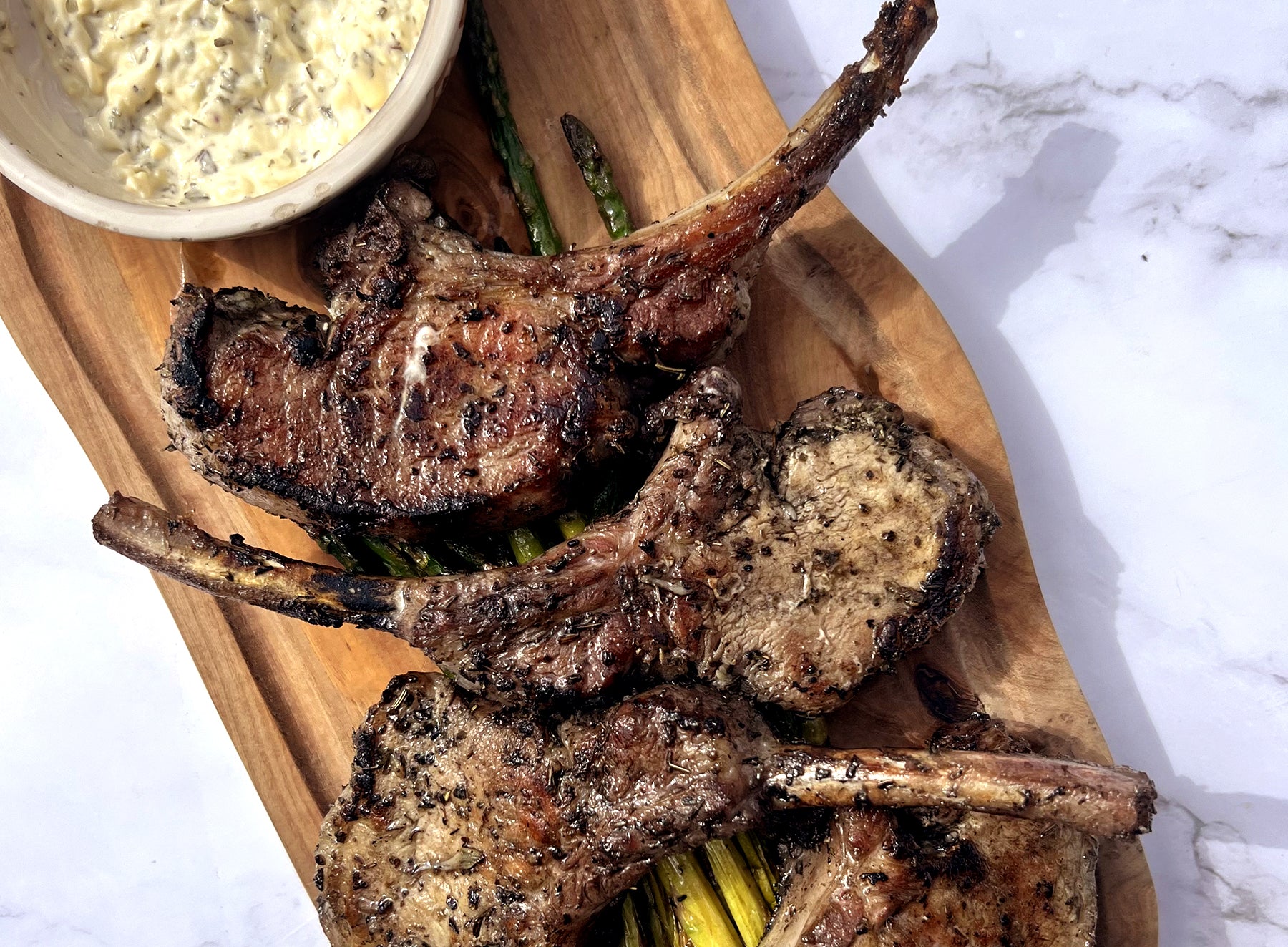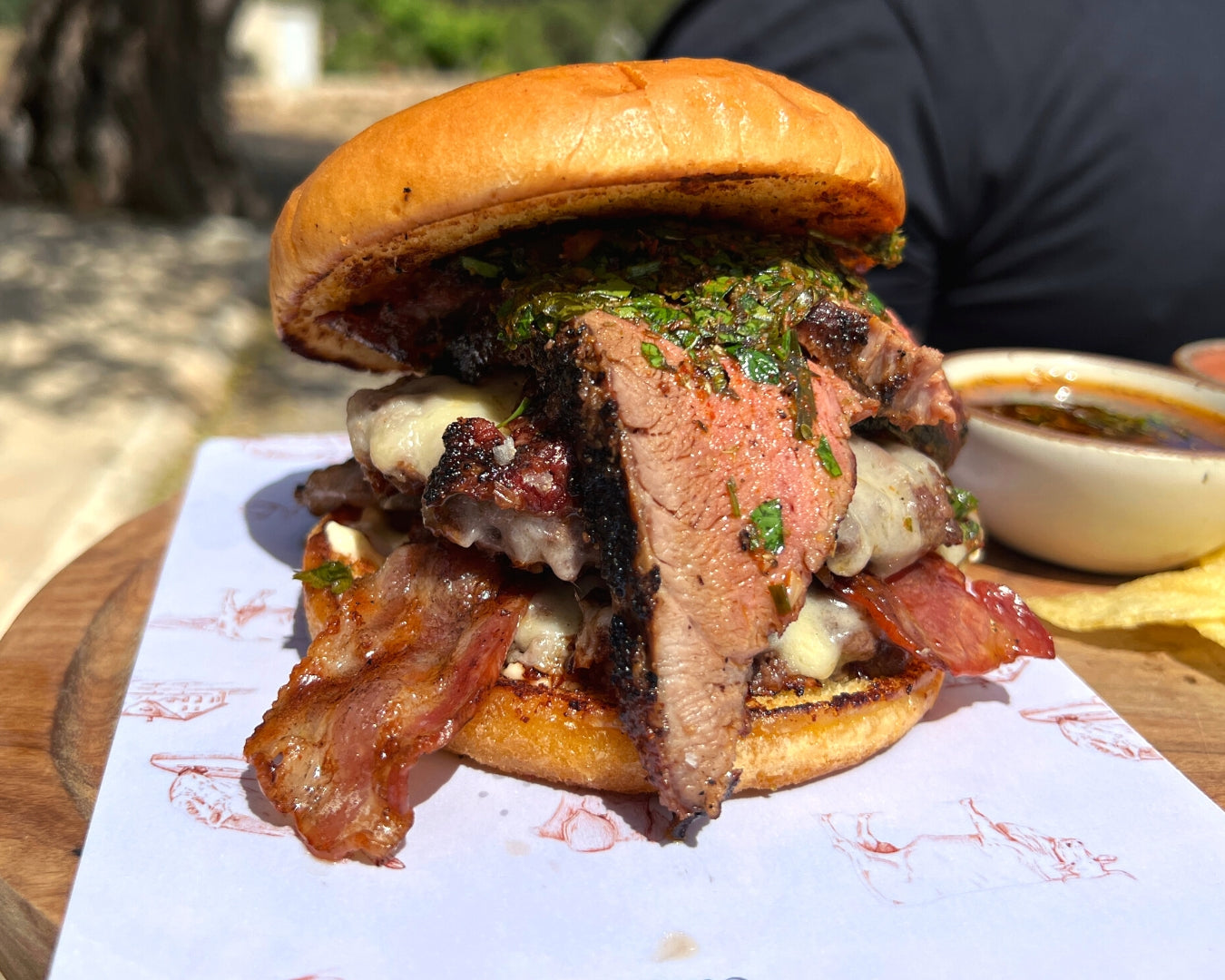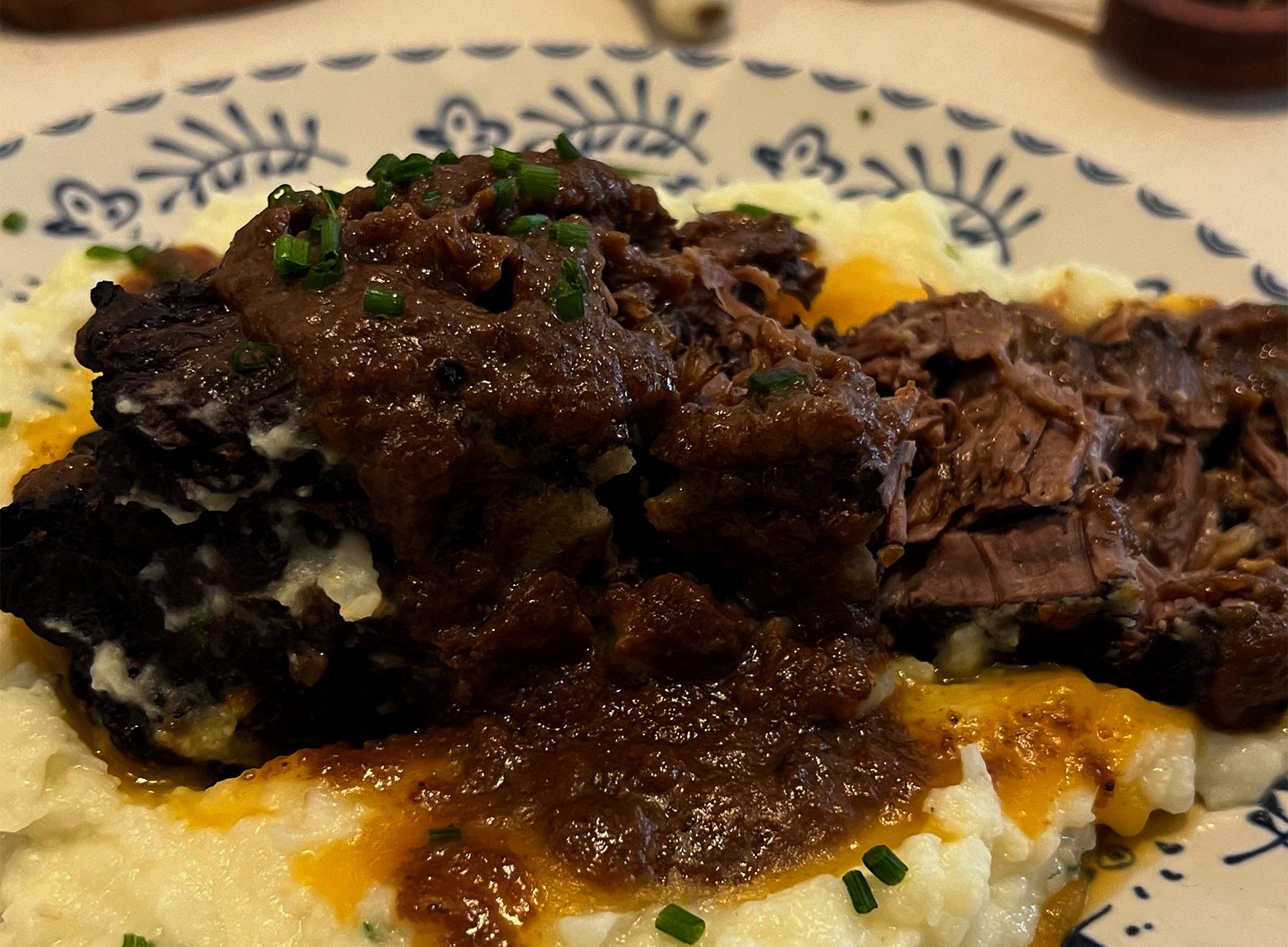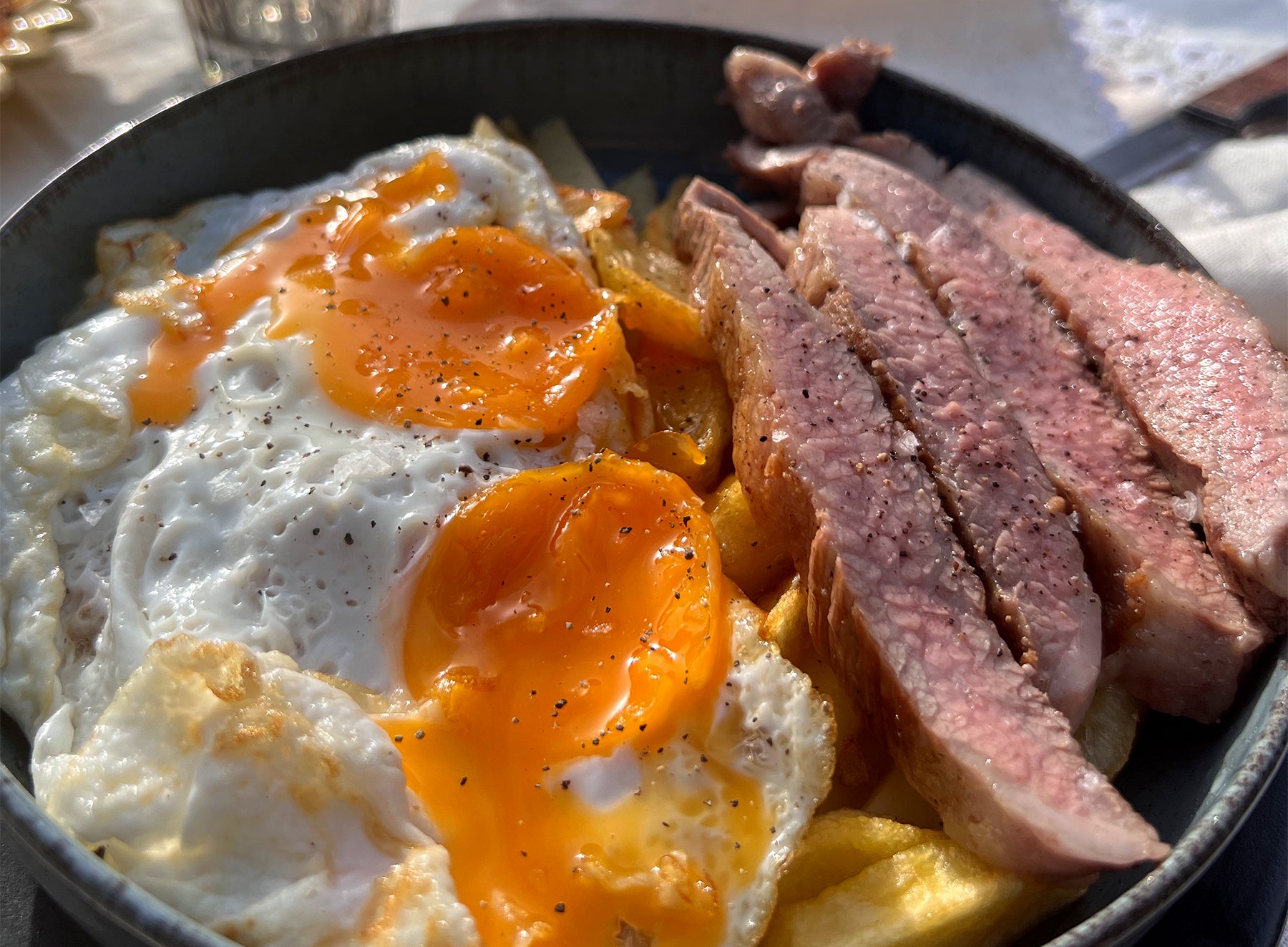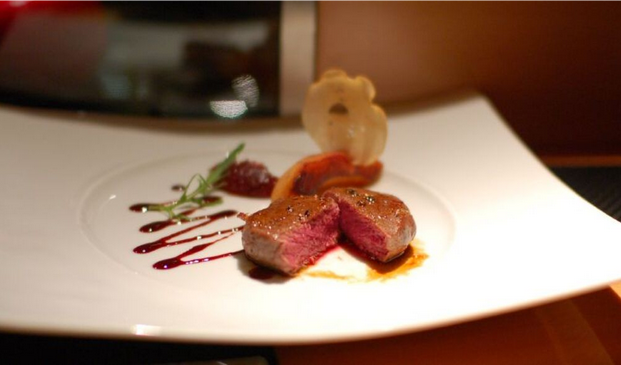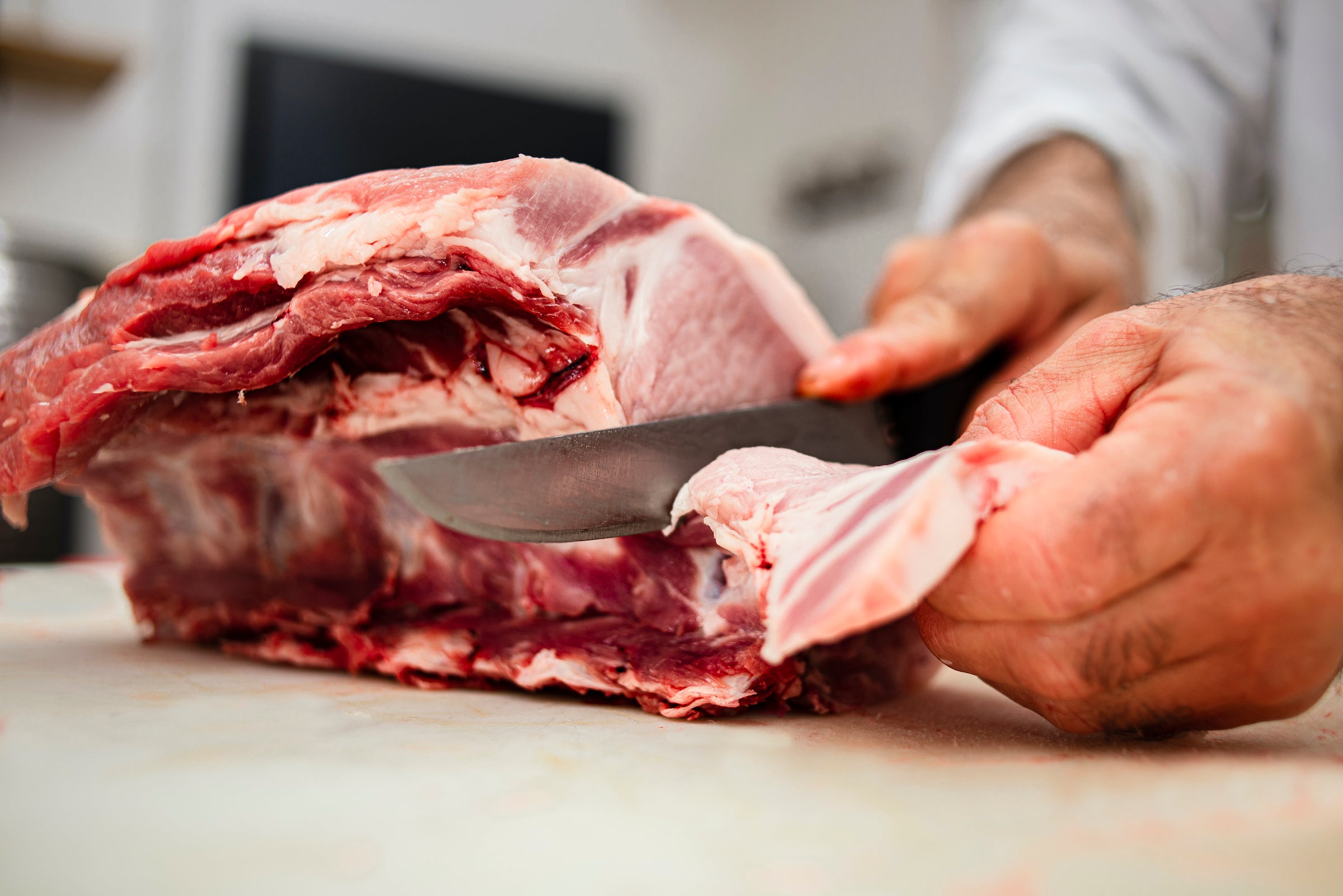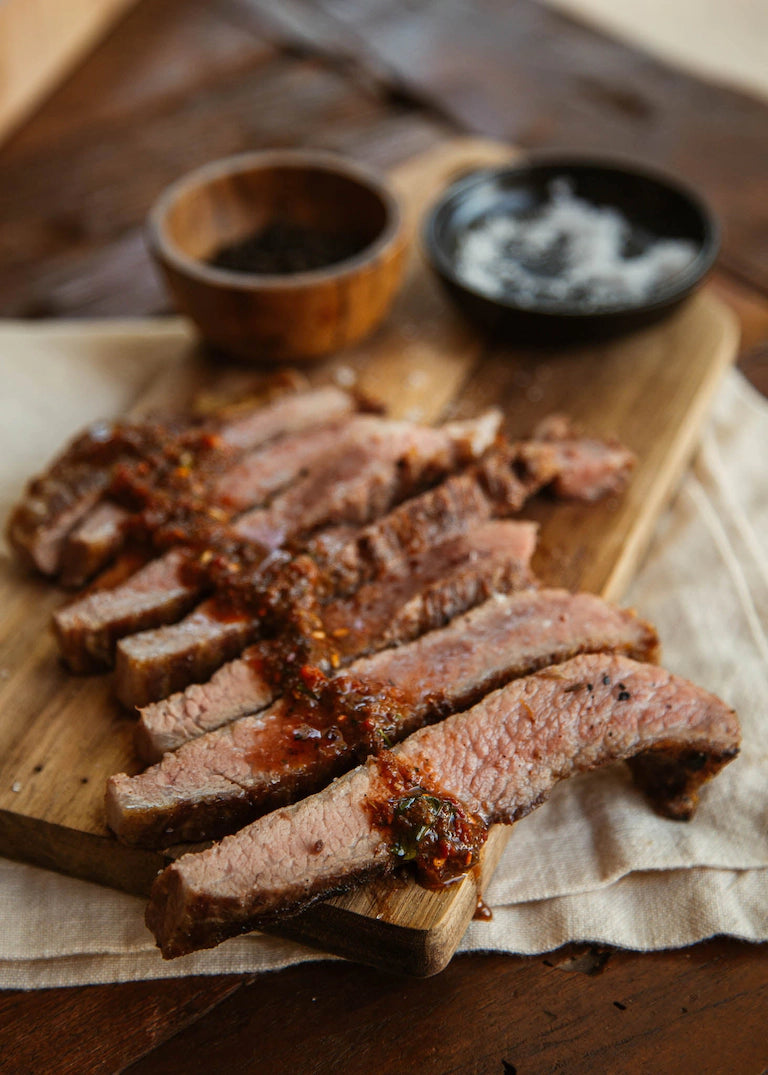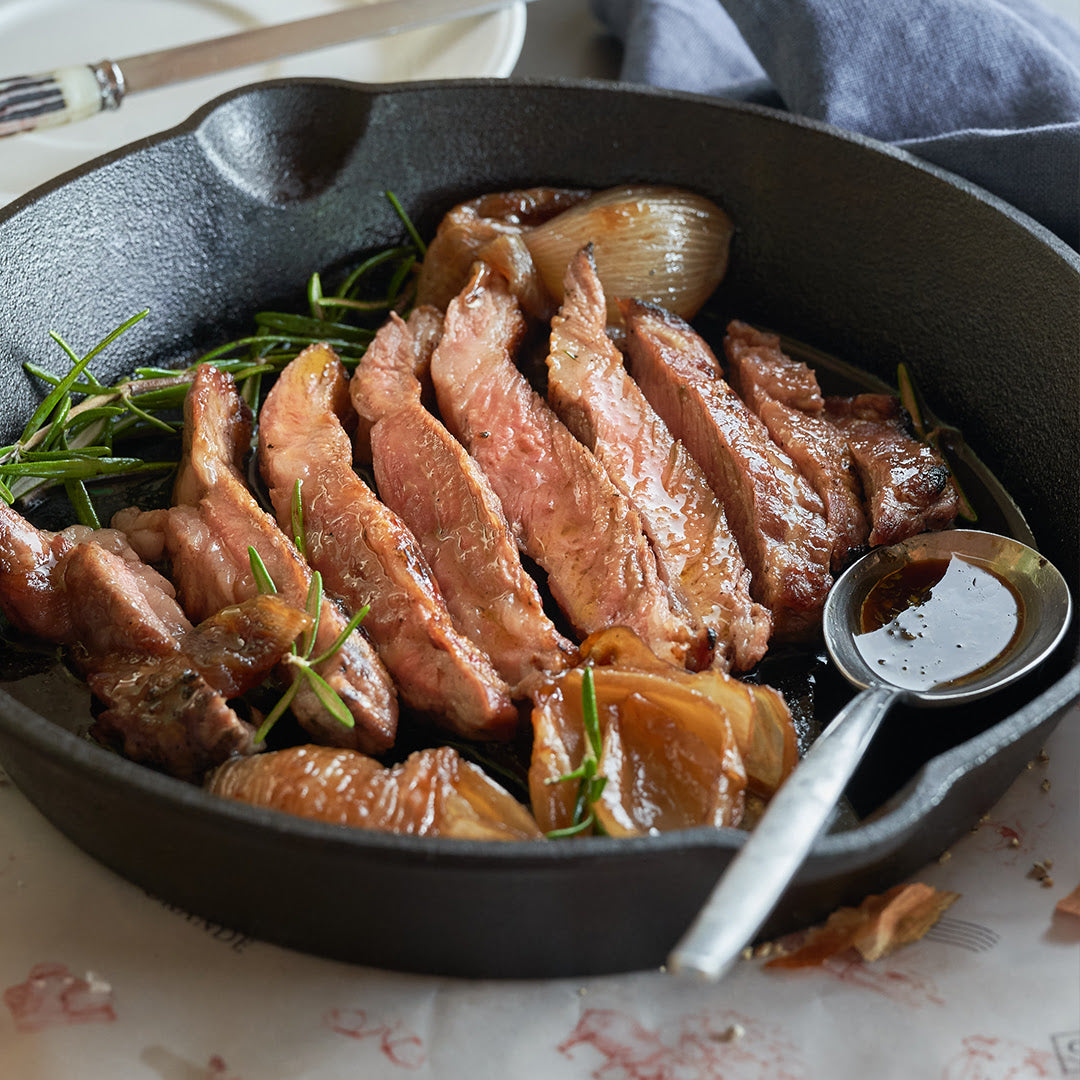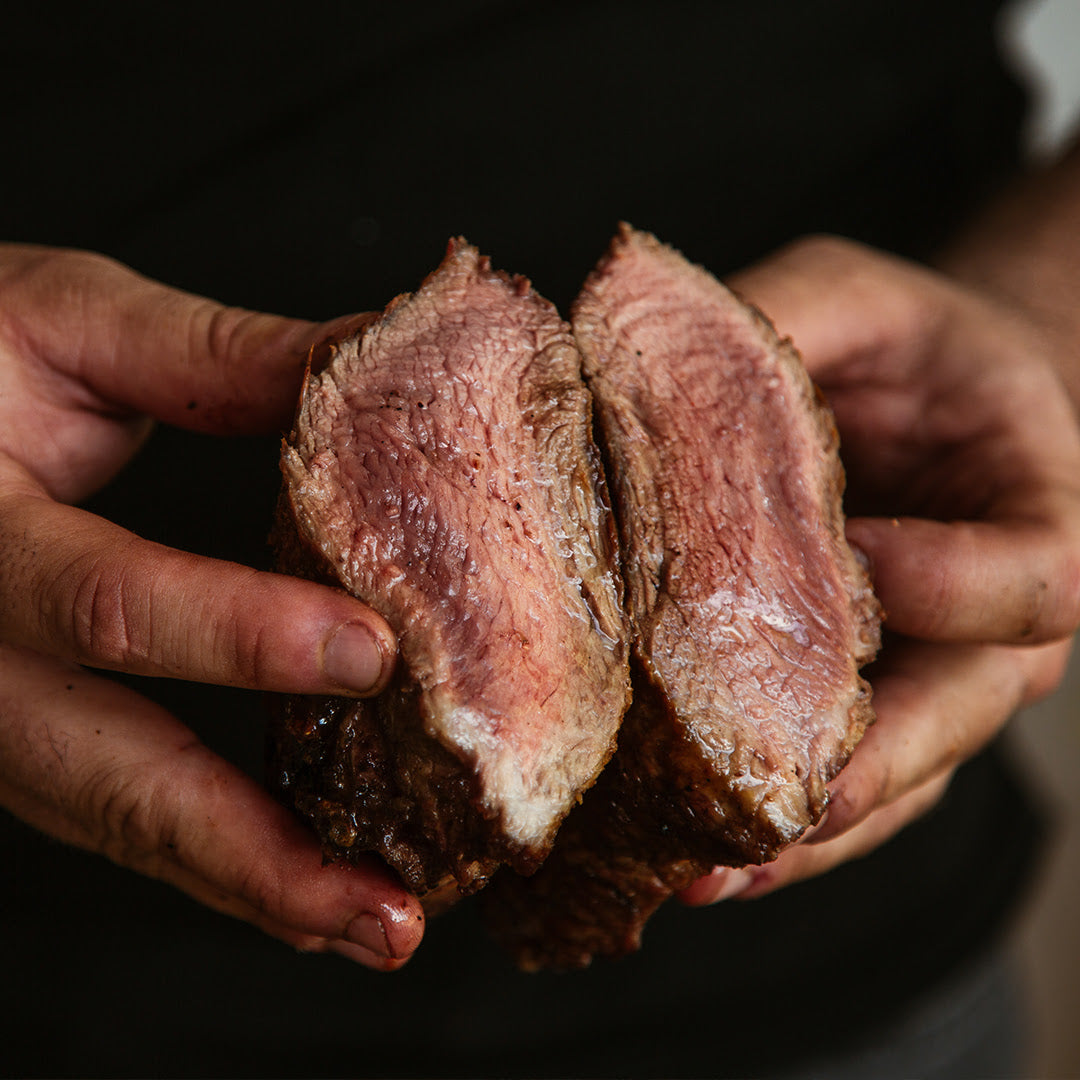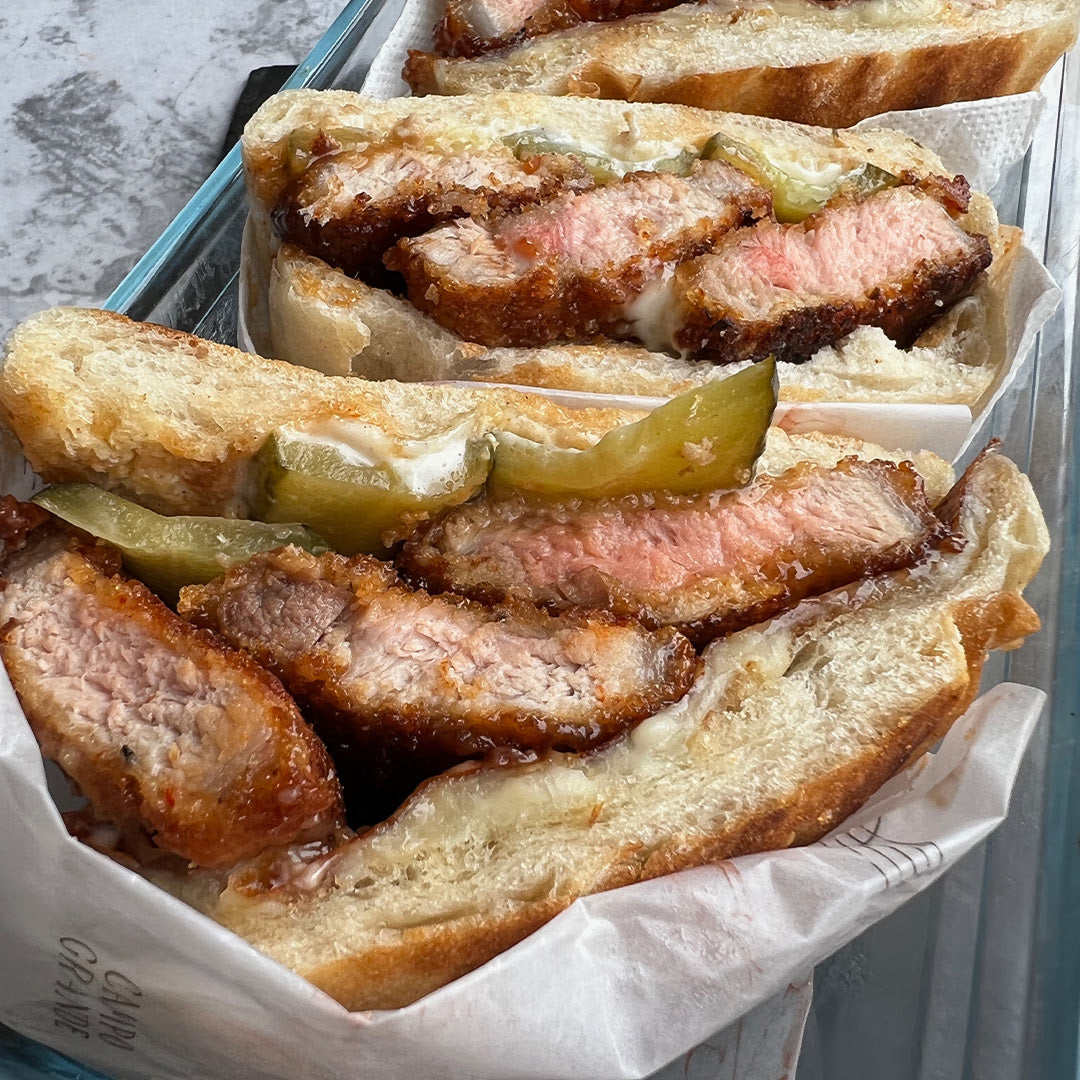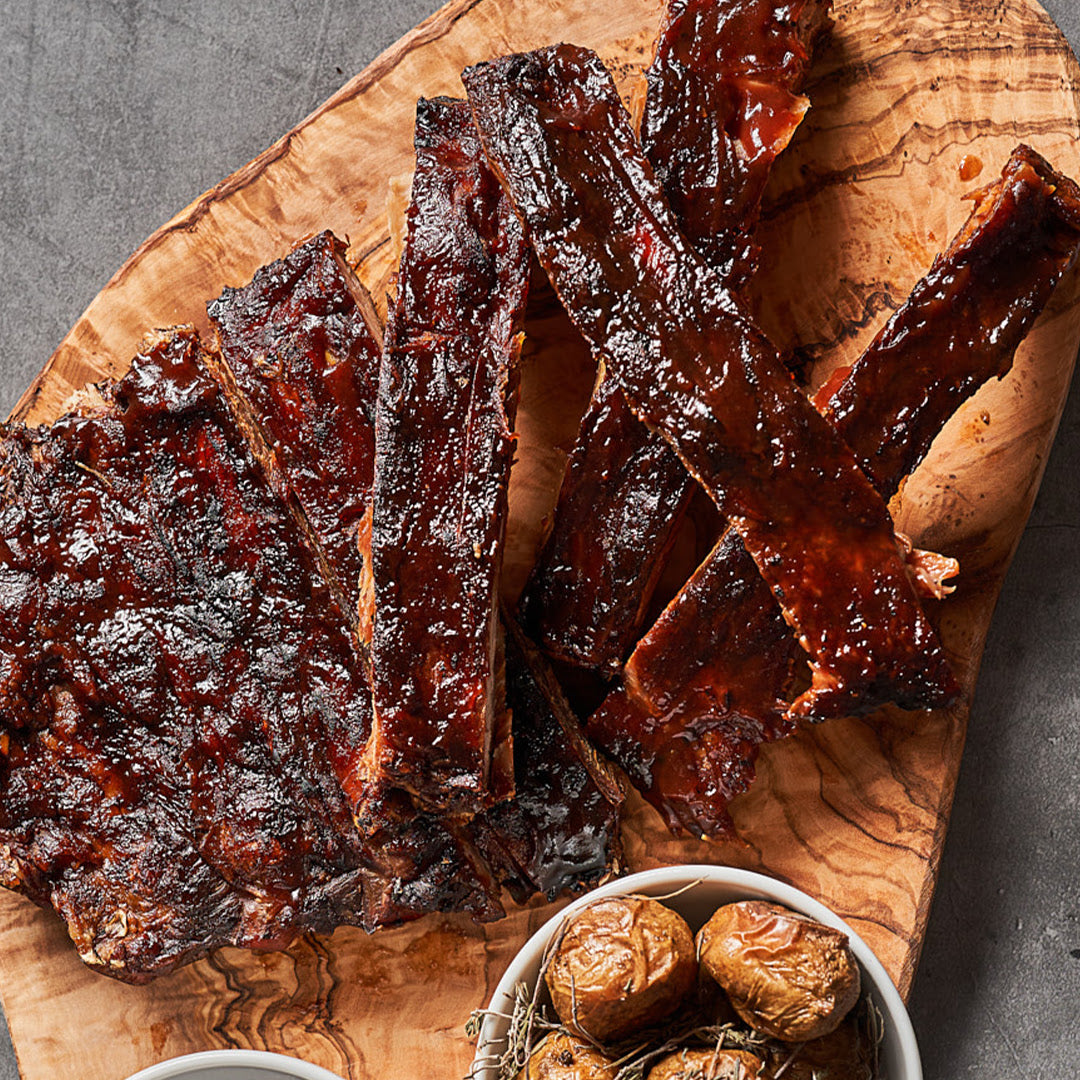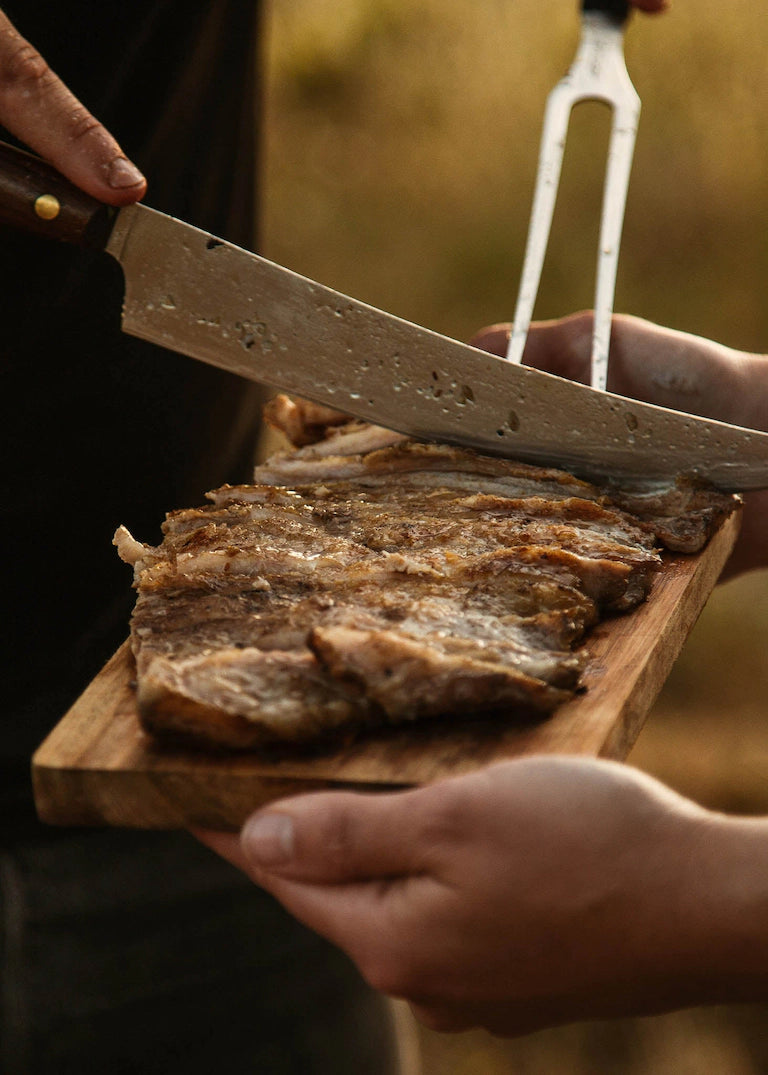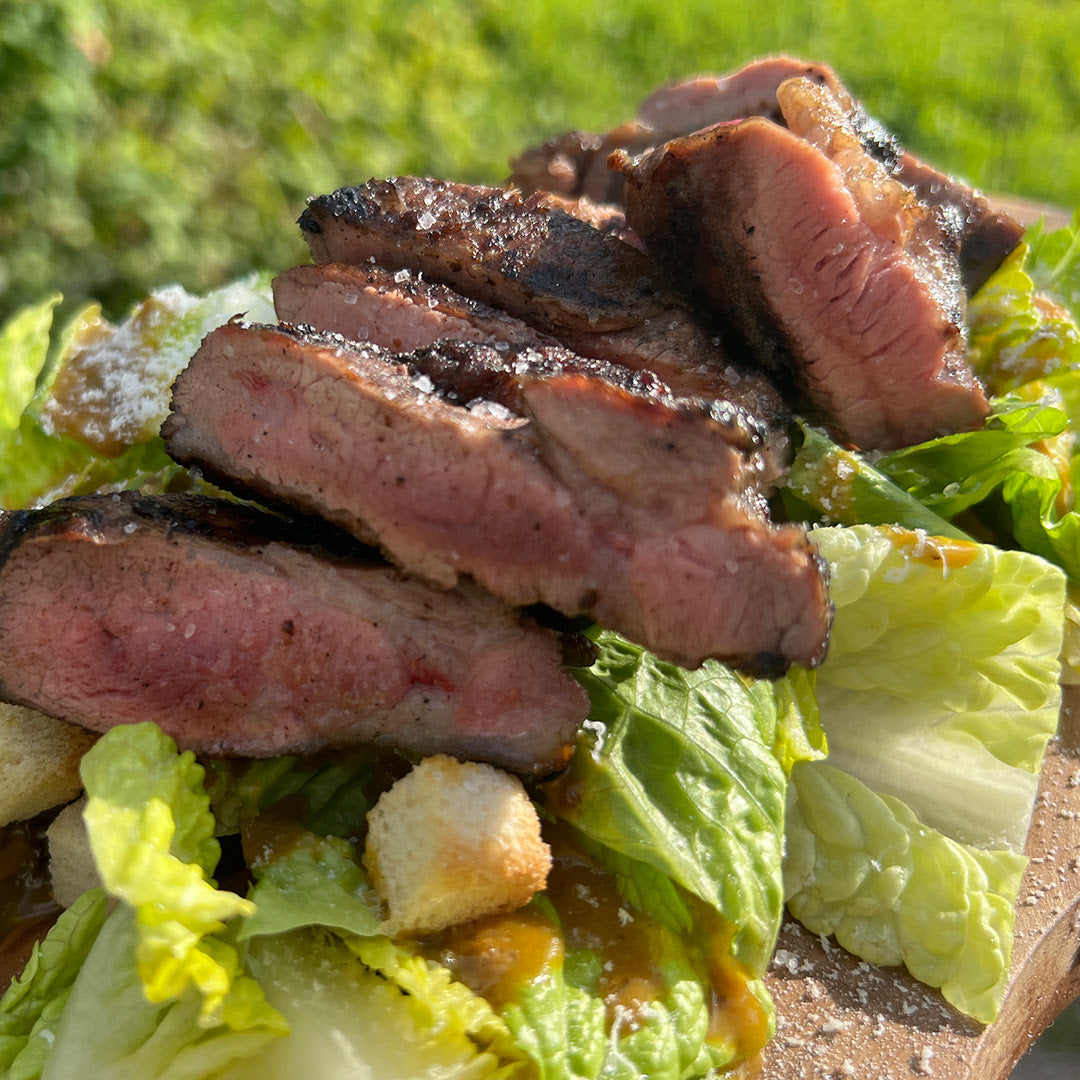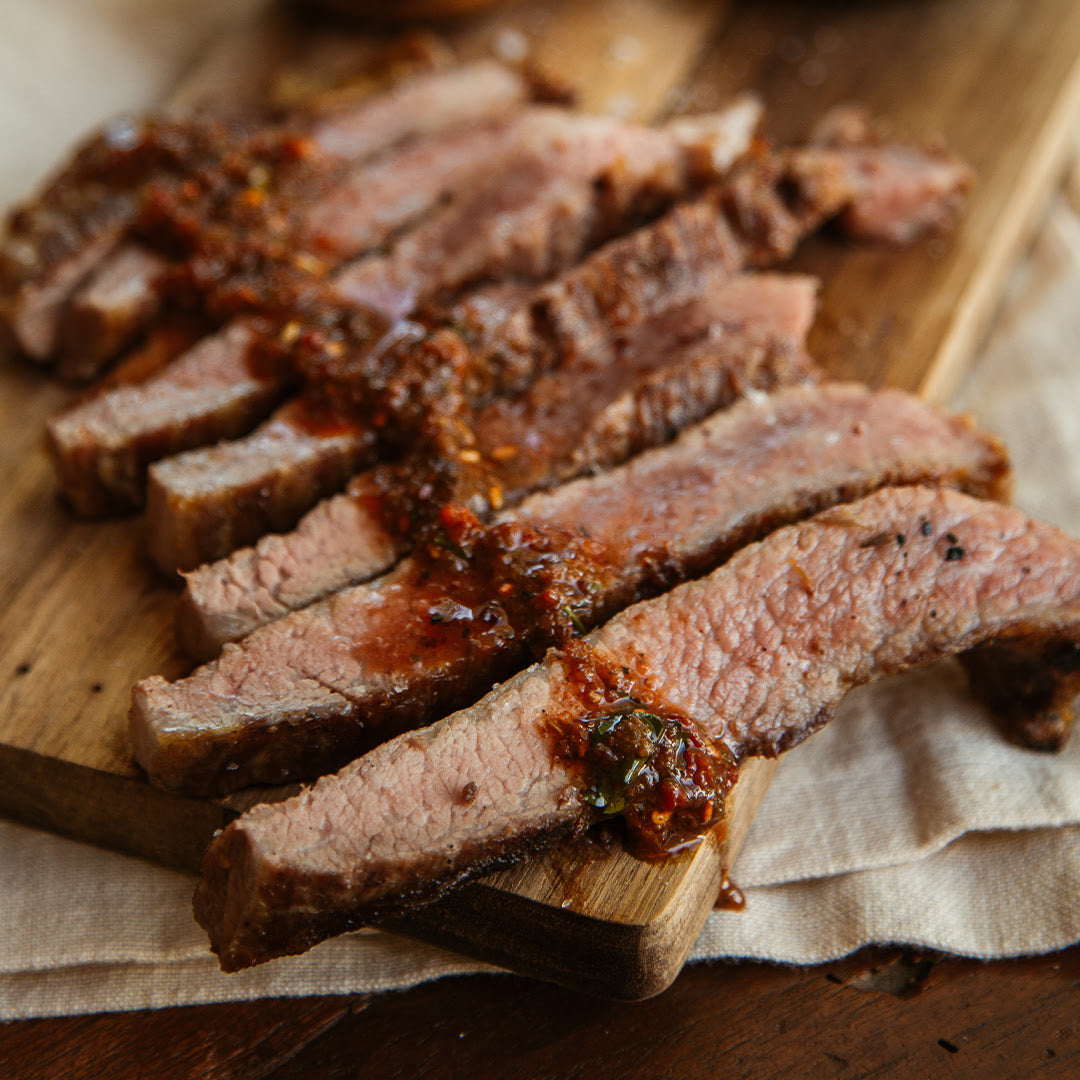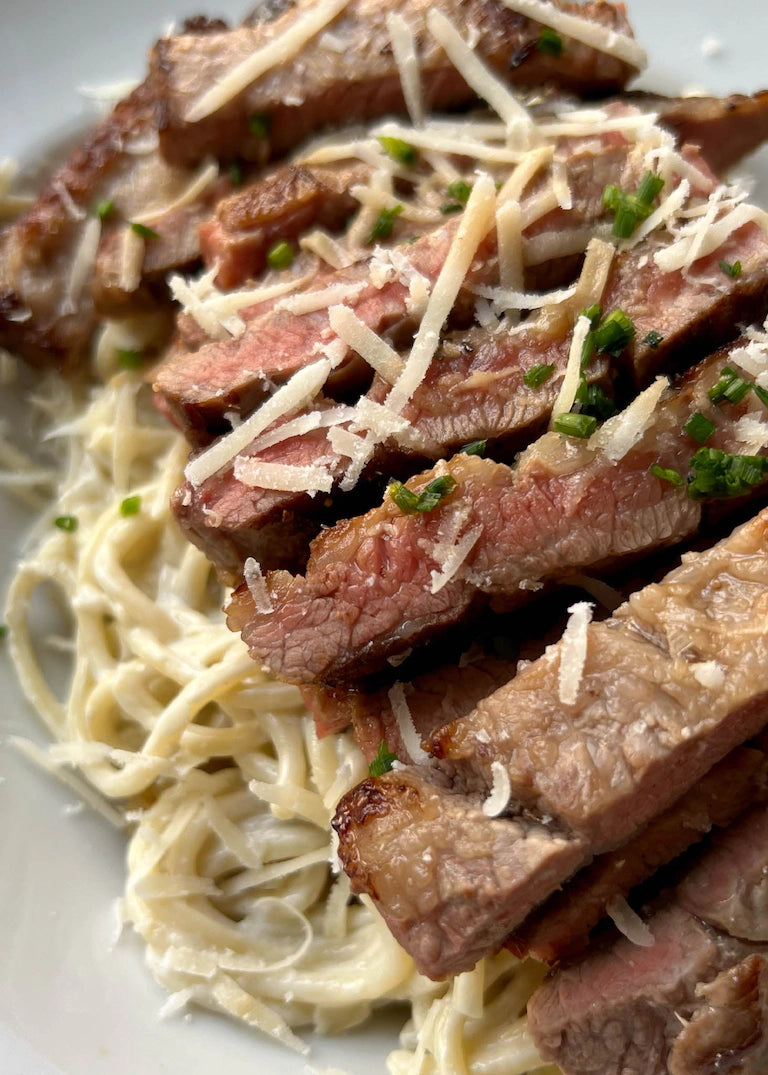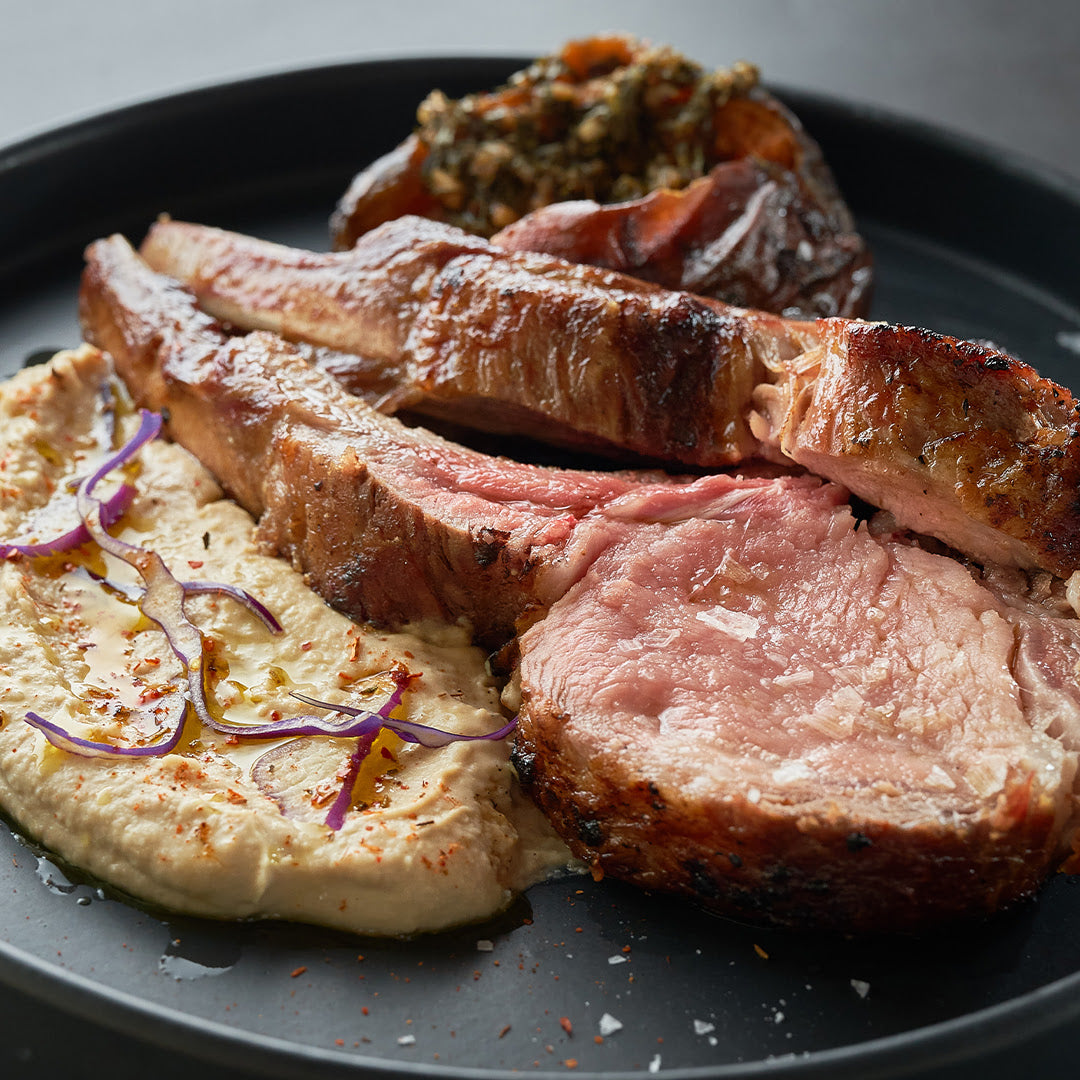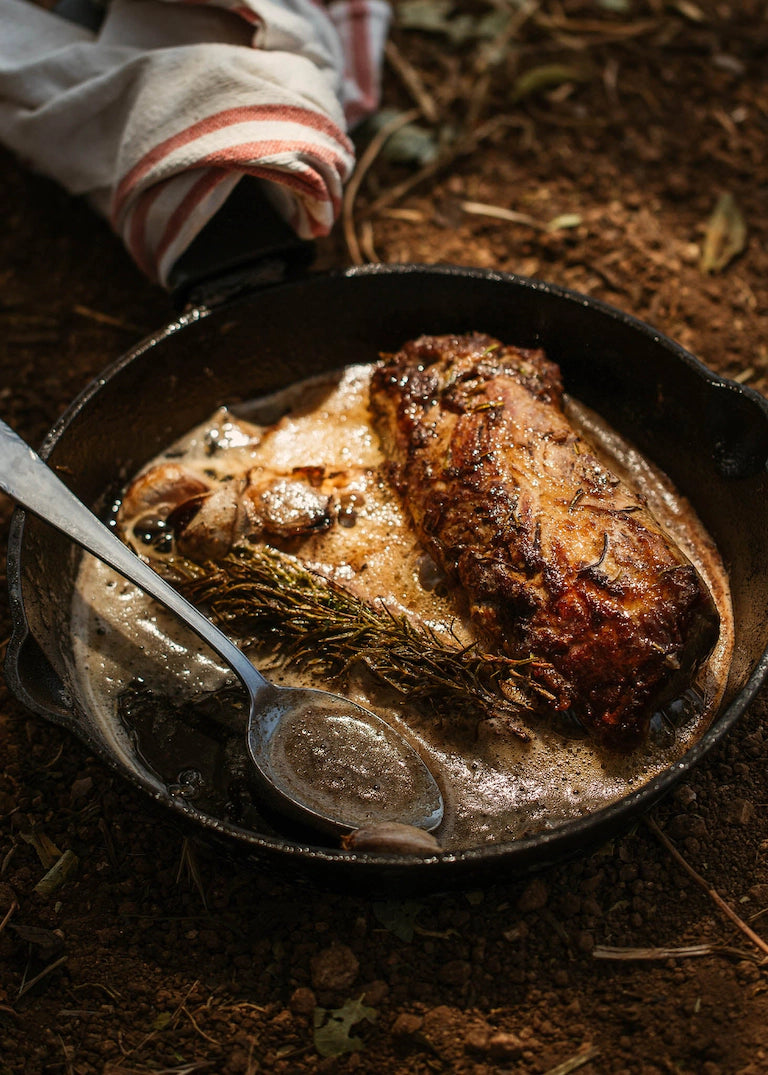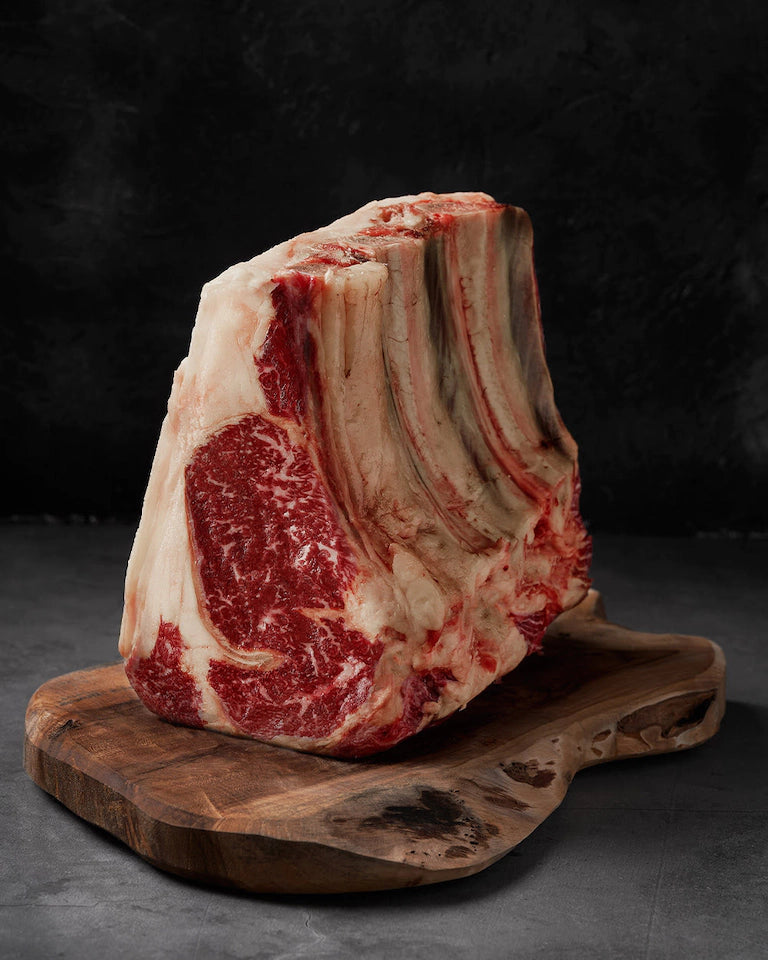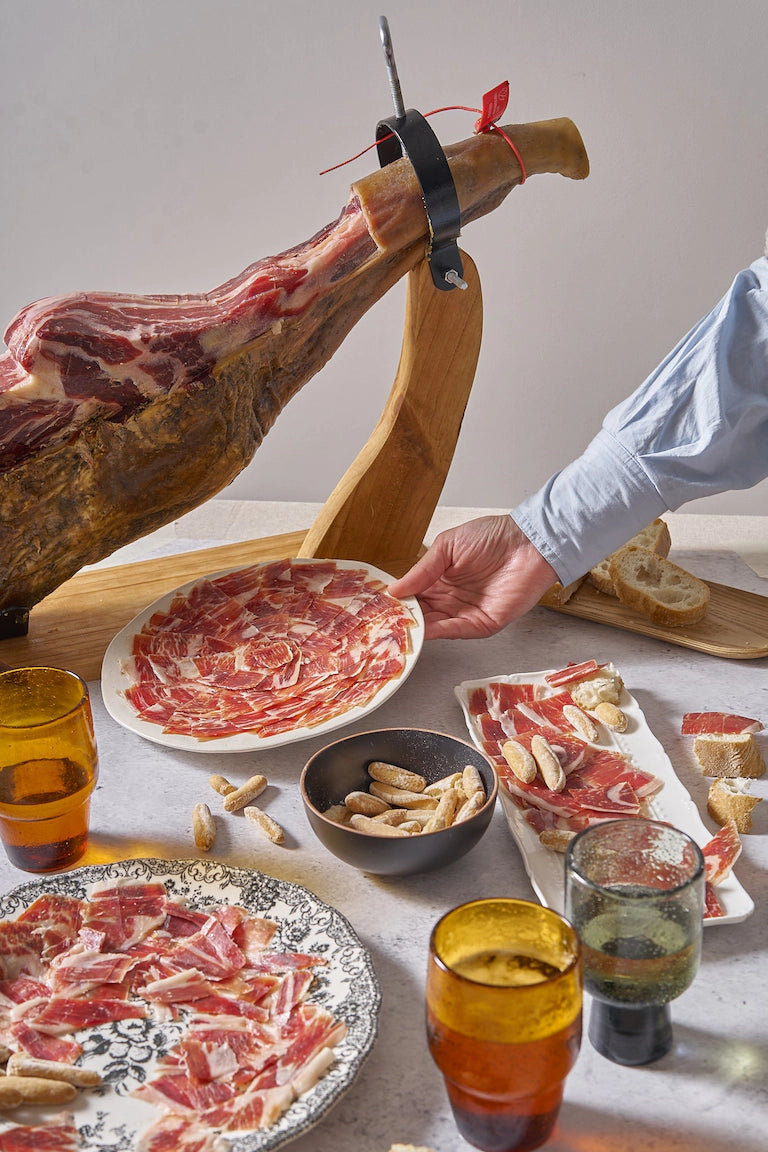
The truth about medium-rare pork
“How would you like your steak?”
If you’re ordering a cut of beef at a restaurant and know what’s good for you, your response to this question should be something along the lines of, “medium” or “medium-rare.”
So then why is it when we cook a quality cut of pork we instead tend veer into those well-done temperatures, leaving our prized piece of meat dryer than our first Thanksgiving turkey?
The main reason for this unfortunate habit is a fear of a certain parasite called trichinosis that can be found on wild game meat or pork if not properly raised and processed. But we’re here to tell you that there’s nothing to fear, especially when it comes to high-quality Ibérico. Cooking your Ibérico pork steak to medium-rare is not only far more delicious, it’s perfectly safe.
The Difference Between Regular Pork and Ibérico Pork
It goes without saying that an Ibérico isn’t a regular pig. Its athletic lifestyle is completely different to that of the typical factory-farmed, corn-fed pig you’re picking up at the supermarket. This special and natural diet, combined with humane farming methods, results in meat with a particularly healthy fat makeup and a wildly unique flavor you’ll want to savor, not cook away.
Not only is Ibérico pork superior in quality and flavor to much of the pork sold in the United States, but the USDA also has very special requirements when it comes to raising Spanish pork for U.S. consumption. Spain has been exporting pork to the U.S. for a long time. Thus, the production and processing of the pork is highly controlled and requires multiple certifications from authorities within the USDA/FISIS (Food Safety and Inspection Service), and USDA/APHIS (Animal and Plant Health Inspection Service).
The Right Steak Cooking Temperature
Up until 2006, the USDA recommended cooking whole cuts of pork (basically anything other than ground pork) to an internal temperature of 165º F. But with new research in hand, they made big changes. Now, the USDA recommends cooking pork to an internal temperature of 145º F, with an accompanied 3-minute rest time to help the meat make its way over into food-safe temps and also lock in the juices.
This presents all sorts of culinary opportunities. Chef Manu Berganza, who, until moving back to Spain to become the execute chef at Grupo Azotea, used to run the only Michelin-star Spanish restaurant in the U.S., says, “Nowadays, with the veterinary controls we have, we can work the meat in a different way— giving it a lower cooking temperature, and thus, highlighting a juiciness and texture.”

Medium Rare Steak Temp
Why exactly did the USDA decide to approve a little more pink in our pork? Scientific advancement. “Trichinosis has become so rare now” says food scientist and USDA representative Archie Magoulas. “You don’t hear much about it.” Advances in science and veterinary practices have drastically reduced cases of trichinosis in the U.S. There is also far more knowledge about what happens to meat after it's removed from the heat source. Now, we know that the temperature continues to rise during that 3-minute rest period, making it just as safe to consume as any other red meat.
Of course, when they made these changes, Magoulas says the USDA hotline blew up with calls. People couldn’t wrap their heads around it. And even decades later, some consumers still have concerns. Denver Chef Paul C. Reily says, “It’s a holdover from our parents’ generation, where they actually did have to worry about trichinosis.” But food science and technology has changed, and so should we.
Reframing Pork
Here’s the deal: 145º F is the ideal temperature for cooking whole cuts of pork. “We actually consider that medium-rare,” says Magoulas. In other words, the USDA— one of the strictest food safety organizations in the world— is telling all of us to cook pork less. And if the USDA says it, you can trust it’s safe.
As consumers, we need to start treating pork like other red meats, especially high-quality pork. “It’s time for heritage hogs to have the same status as beef,” says Reily. “People have no problem eating steak tartar from a cow that’s lived a not-so-hot lifestyle. But if someone finds a little pink in the middle of their pork tenderloin, they get uncomfortable.”
Keep your temps low and you’ll enjoy the new and nuanced flavors of an Ibérico pork steak far more than if you cook it up to that 180º F you may be used to doing. Don’t believe us? Take it from Chef Berganza, who is so keen on showcasing the flavors of Ibérico pork that he actually has a pork tataki on the menu at his restaurant. Or from Chef Guillermo Benjumea, who, after spending time in the kitchens of Gramercy Tavern and Eleven Madison Park, opened his own spot in Madrid: “At Casa Orellana we only use Ibérico pork, which allows for much lower cooking temperature because the meat is much darker and marbled.” he says. “For example, we serve Presa Ibérica at medium-rare.”
How to Cook Steak: in the Oven, Grill, and Stovetop
So what happens when you overcook Ibérico pork steak? First, you’ll hear the rumble of a few Spanish abuelas turning over in their graves, and second, you’ll essentially destroy all of the buttery textures and complex flavors that are so particular to Ibérico pork!
Luckily, there are all sorts of ways to properly cook an Ibérico pork steak that will keep the abuelas at bay. Looking to get that juicy inside and caramelized outer crust on cuts like Abanico, Pluma, or Secreto? A quick sear on the stovetop or a few minutes on the grill will make it happen. If you’re after a rack of fall-off-the-bone ribs, try slow-roasting them in the oven. And to make those Ibérico flavors sing in a juicy cut of Presa, a quick sear in a hot pan and 10 minutes in the oven will get you there.
But no matter how you decide to cook your cut of Ibérico, go medium-rare. This is the wagyu of pork isn’t it? Let’s start treating it that way.
To cook your own medium-rare pork, check out the Campo Grande Ibérico Pork Box and find out how pork is supposed to taste.
